This story originally appeared in i-D’s The Post Truth Truth Issue, no. 357, Autumn 2019. Order your copy here.
“I’d never heard of i-D,” says FKA twigs in her east London studio, the room calm and heavy with incense, as we reminisce about her first ever magazine cover. “I’m from Gloucestershire. I wasn’t really about that life.” It was 2012 and Twigs was working as a dancer when the photographer Matthew Stone approached her in a London club. “He came up to me and said ‘I really wanna shoot you’. And I turned around and told him, deadpan, ‘Everyone does’. Can you imagine?!” she exclaims, laughing. Matthew – now a good friend and regular collaborator – saw her again standing on the platform of Hoxton station and tracked her down through a mutual friend. “It was morning when he saw me, I was actually on my way home from a night out, still in the same look as the night before.”
Twigs, who isn’t a fan of having her photo taken, was oblivious of the shockwaves the cover would cause. “I think I’m on my own mission a lot of the time. Someone will be like, ‘Do you wanna go and do this big thing?’ and I’m like, ‘Yeah… but I’m trying to learn how to do a one-handed cartwheel, so is this gonna infringe upon that?’” But when the issue came out and she saw herself on the cover – her hair in braids, a gold ring through her septum, the word love spelled out on her forehead in baby hairs – she knew it was something special. “For me, it wasn’t just an i-D cover,” she says. “It had a huge effect on the way people were seeing young black culture; I think it changed a lot. And then my music came out.”
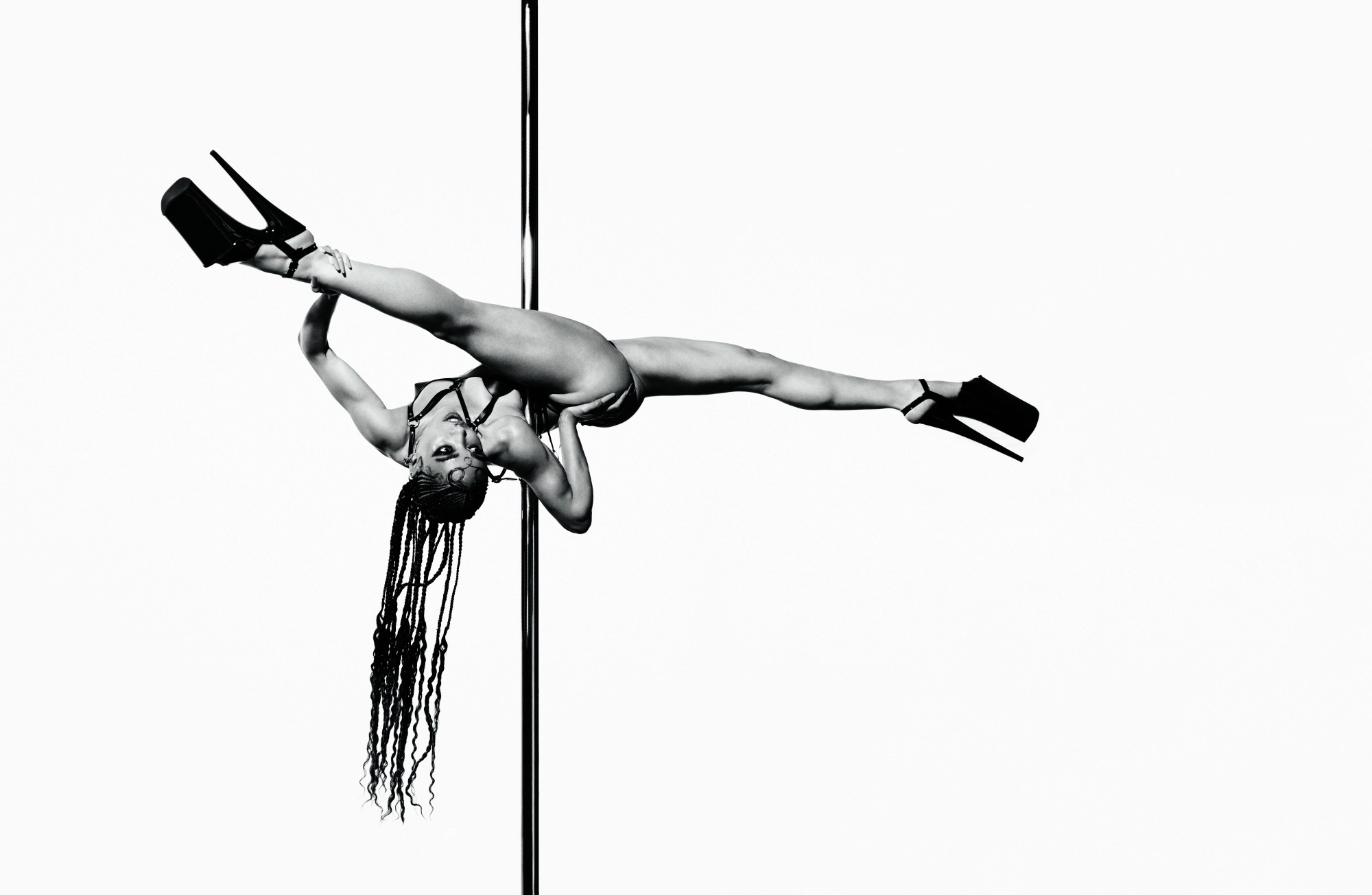
By the end of that year she had released her first body of work, EP1, a still-gestating version of everything that makes her one of the world’s most compelling artists today. All the signs were there – that almost whispered soprano stuttering over experimental electronic production – but it was her Arca-produced EP2, which followed in 2013, that propelled her to fame, singles “Papi Pacify” and “Water Me” soared into the public consciousness (remember the Twigs nameplate necklace that appears around her elongated neck in the EP’s artwork? She’s wearing it today).
Then she released her Mercury and Grammy-nominated debut album, LP1. “I think I was quite green really,” she says of herself at the time she put out the record, which featured production from Sampha, Dev Hynes and Paul Epworth. “I feel a lot more independent now. I feel more open to the world and to different ideas, and I think I have less tolerance for things that don’t serve me. When I was younger, I put myself through a lot for the idea of something bigger than myself, whereas now… I haven’t quite figured it out, but there’s definitely a way to get to that place without having to drag yourself backwards through a bush. I’m a bit better socially now, I used to feel like a deer in the headlights.”
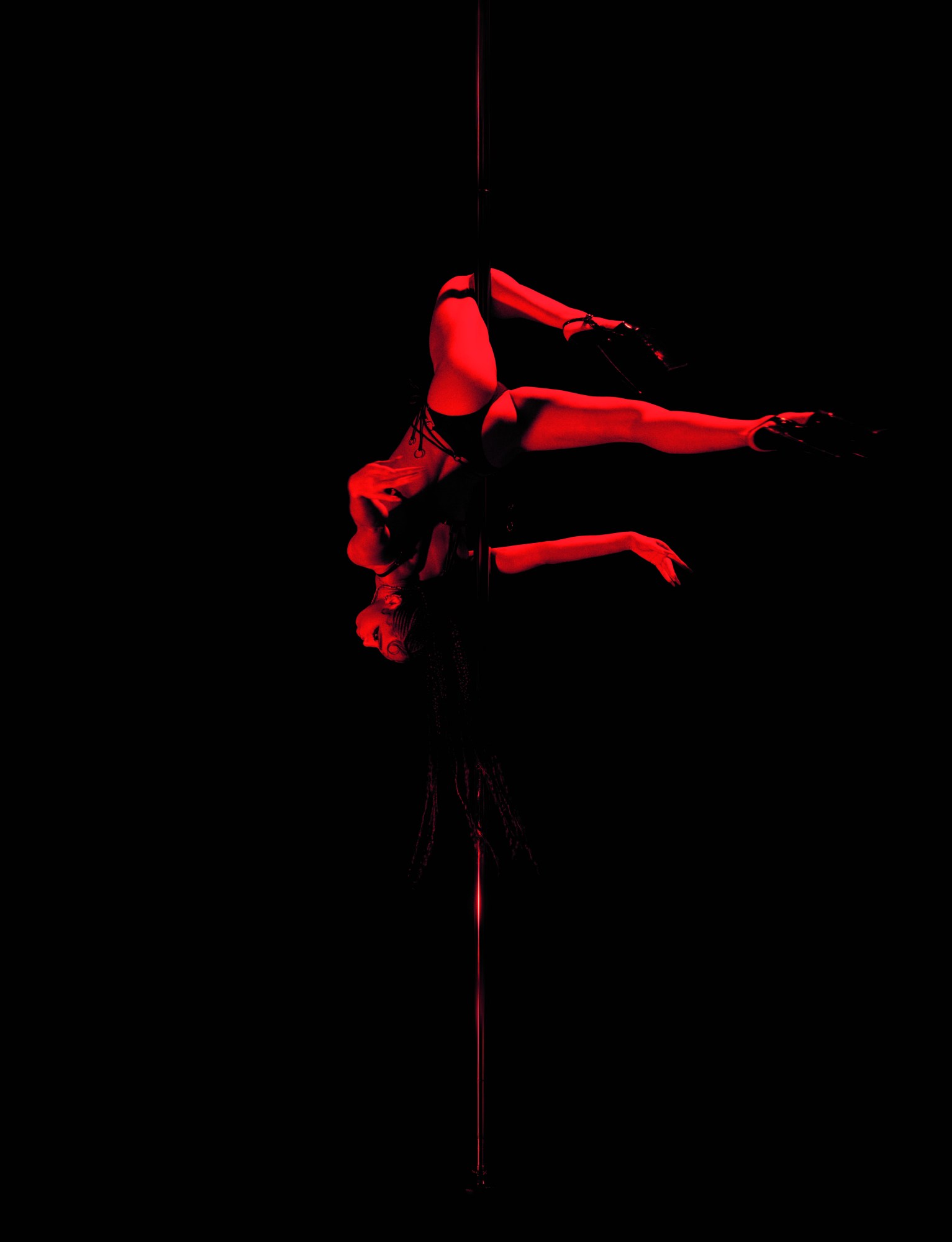
Now 31, Twigs seems to have already lived many lives. I ask her if she’s tired. “No,” she says, with a dorky laugh. “Not physically. My body feels younger than it’s ever felt. I feel more conditioned, well-oiled. Mentally though, I think I’ve always felt quite old, like I’ve definitely done a few rounds here. But I’m not tired… I feel like a tree.” She’s been through a lot over the past few years, though. “I had tumours in my uterus, so I had an operation to have those removed,” she says, remarkably matter of factly. “Then, four weeks after my operation, I get a call from Spike Jonze.”
The Oscar-winning director wanted Twigs to dance in his 2018 Apple HomePod commercial. She signed herself up expecting the lead time to be at least a month but soon discovered they wanted to fly her out to LA in the next week, and she would need to do a workshop right there and then over FaceTime. “I looked like death,” she says. “I looked disgusting. I wasn’t supposed to be moving. And Spike’s like, ‘Okay, so we’re gonna play the song and I need you to dance around your living room to it’. I was fully going for it and literally feeling like my uterus was gonna fall out. I didn’t tell them about the surgery or that I had all these stitches in my bellybutton. It was grim. It was grim as fuck.”
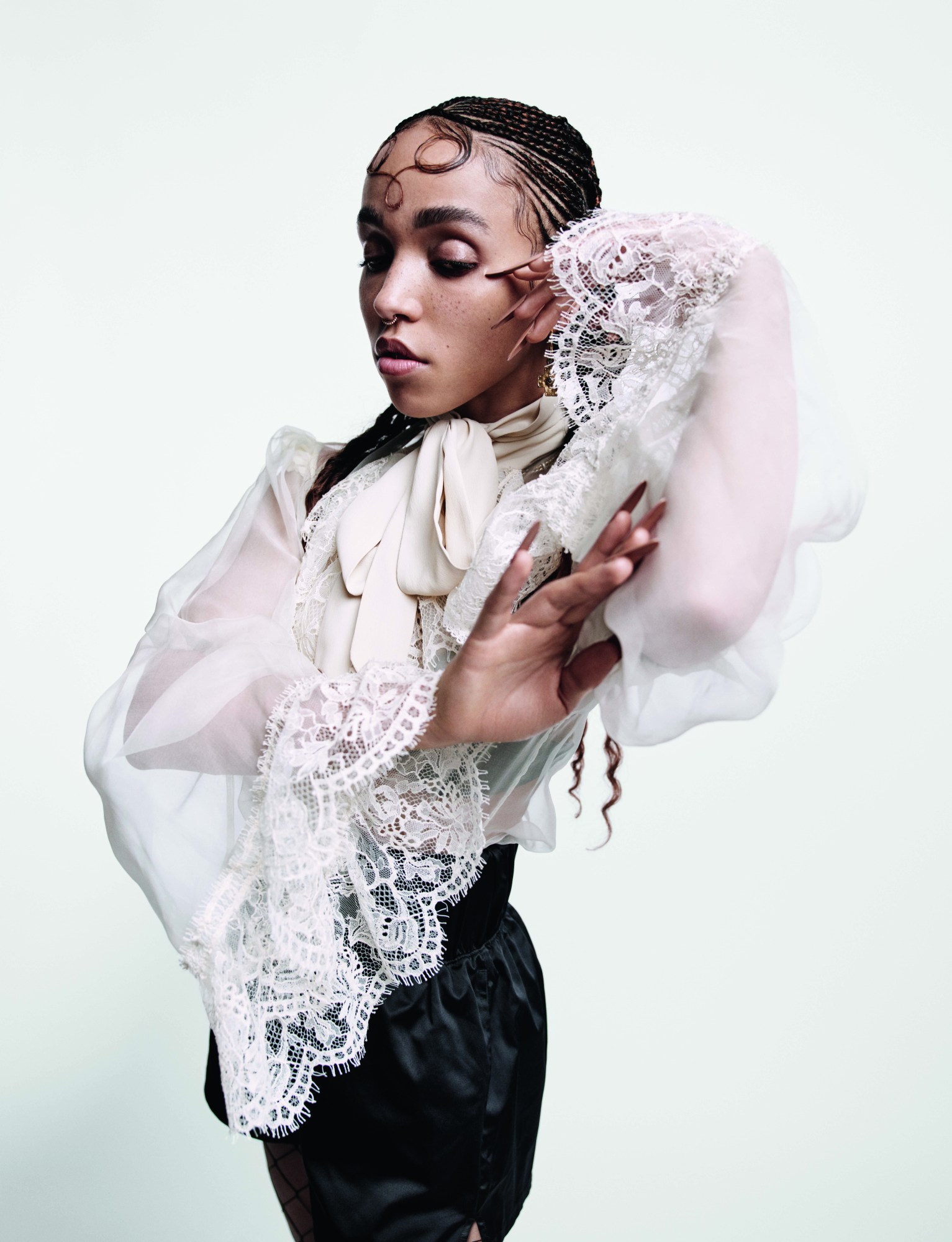
“It was an amazing experience but I really wasn’t well,” she says. You’re meant to wait six weeks after surgery before you start walking, let alone dancing. “When I was on set with Spike, the stitches in my bellybutton were splitting open. I told him: ‘Just so you know, if I start bleeding through this white shirt…’. I basically couldn’t lift my arms up, because all your organs stick together and you can’t stretch your stomach. I was involved in the choreography though, so I based all the movements on Audrey Hepburn as she was always moving like that – very forward and with a contracted stomach – because that’s all I could do.” This is nothing if not the perfect example of just how disciplined Twigs is. If she decides she’s going to do something, she’ll move hell and earth to do it.
Talking of which, while recovering Twigs had had an idea for a music video… one which required her to become an incredibly skilled pole dancer. “When I first started doing pole dancing it was horrific, I was a hot mess,” she says. “I felt like a slug rolling around on the floor trying to hold on. But after you learn one trick, it becomes quite addictive.” The results of her rigorous training are showcased in the stunning video for “Cellophane“, which came out in April of this year. Directed by Andrew Thomas Huang, it shows Twigs take to the pole in an ornate golden two piece before a weird insect creature wearing her face flies down and sends her spiralling into a dark, muddy abyss. “It’s more than I ever could’ve dreamed for,” she says.
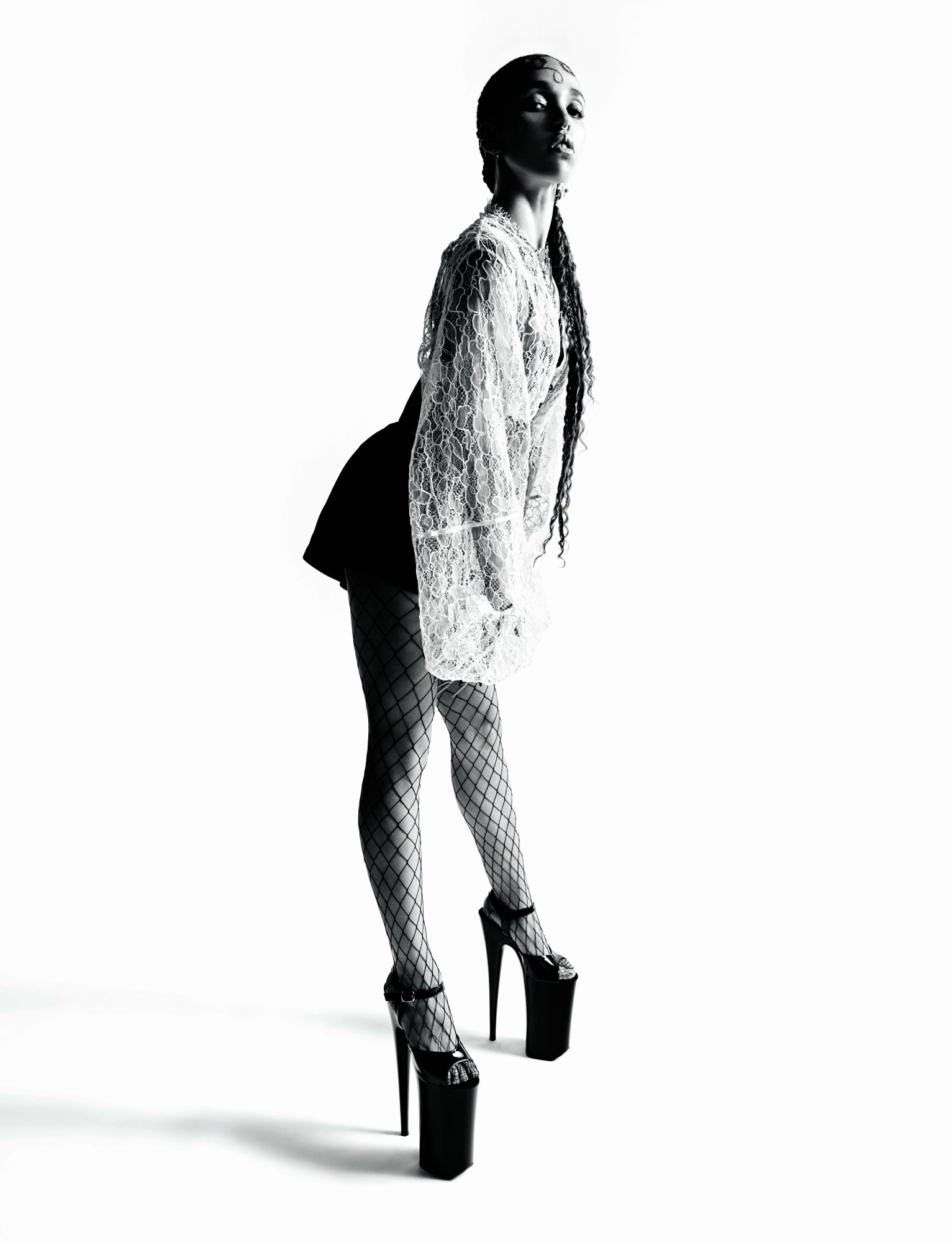
Lyrically it’s heartbreaking. ‘Didn’t I do it for you? Why don’t I do it for you?’ Twigs sings. “’Cellophane’ is particularly desperate,” she explains of the song’s emotional centre, “but there’s a camp wink and a hint of irony to it too. I don’t know whether anyone else will get that, though.” The joke is on whoever made her feel that way. And although when she wrote it she was very much in that headspace, well, she’s learned how to pole dance since then. “It’s funny that, as women, we’re asking those questions without realising how epic and iconic we are. Those feelings I had are the result of some socially brainwashed upbringing that I’m not even aware of, but actually, in the core of myself, I know that I’m fine. It’s like a duality.”
“Cellophane” is taken from Twigs’s second, long-awaited album, Magdalene, which she’s currently gearing up to release via Young Turks this fall. Fans who attended her mindblowing theatre tour of the same name this summer will already be familiar with the record’s vulnerability. In her show, Twigs is an all-powerful being who navigates an hour and a half of pole, tap, swordplay and earth-shattering vocal performance in a series of extravagant Ed Marler-designed costumes. It’s exhausting just watching. “Fifteen minutes before each show I’d be like, ‘I can’t do it. The pole… the tap dancing… no one gets it. What if I fall off the pole? I’ve thought about it and it’s too hard! I’ve over-extended myself! I wasn’t in my right mind! How could you let me make these decisions?’” If she was some manufactured pop act, she reasons, she would’ve at least had someone to blame. But this was her idea. It was her fault. “It’s fun afterwards though,” she adds, laughing. “I come off like, ‘That was great guys! I wish I could do another one!’”
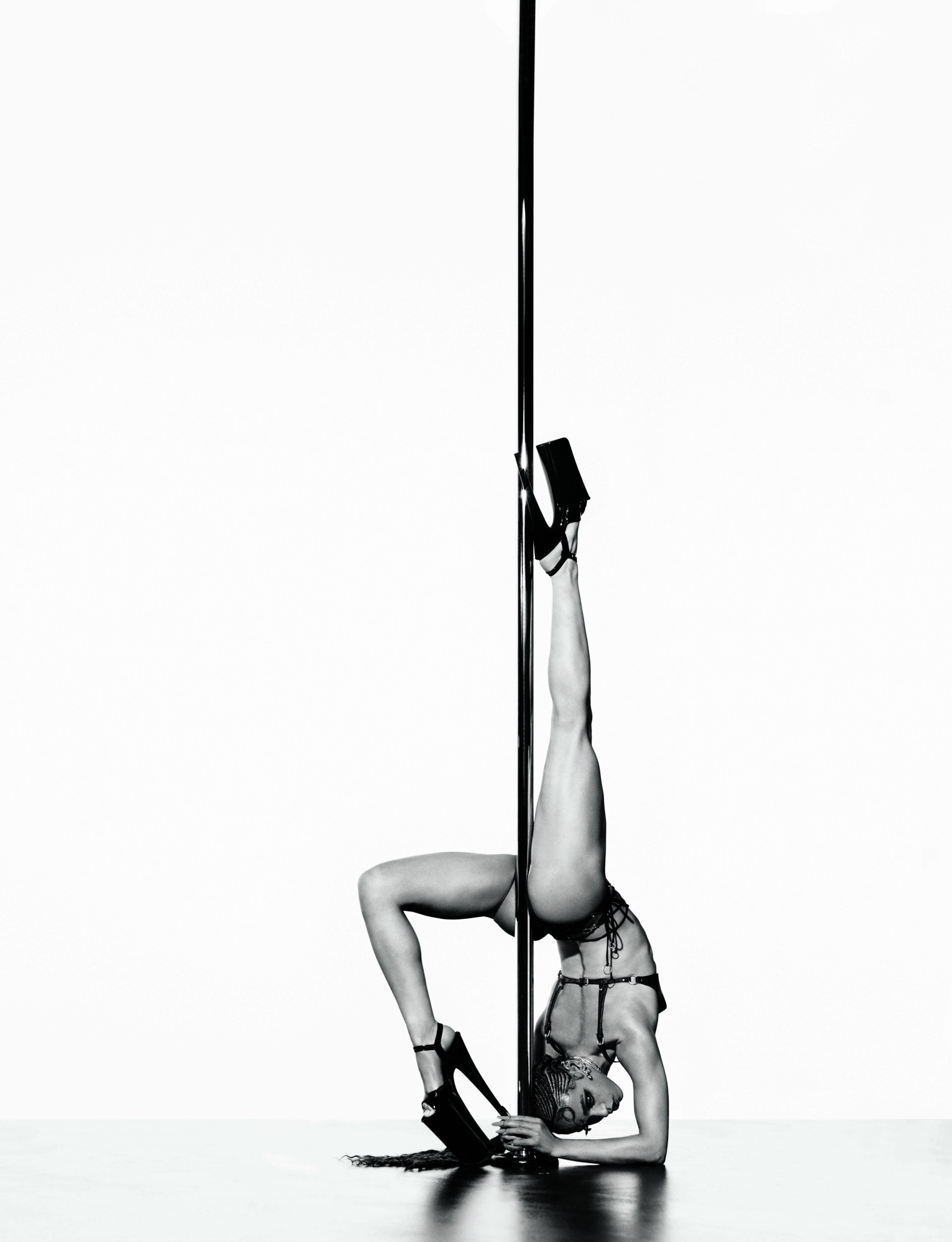
Work began on Magdalene, which she produced predominantly with Nicolas Jaar, alongside other contributors, three years ago. It came to fruition between London, New York and Los Angeles, where she indulged in a period of solitude, taking to wearing long medieval dresses and wandering around by herself. “I was in a sad place, mentally,” she says, “and I didn’t want to come out of it. I don’t have many friends there, and wasn’t communicating with my friends or family here. I just went and locked myself off.”
“The record is about every lover that I’ve ever had, and every lover that I’m going to have,” she says. Musically, she describes it as “just when you think it’s really fragile and about to fall apart, there’s an absolute defiance and strength in a way that my work’s never had before”. If previously, Twigs was seen as something otherworldly, now she’s right there in front of us, pouring her heart out. “It’s really fragile. I made it at a time when I was in recovery – physically and emotionally – and I think that comes through.” The intense vulnerability of the record contrasts with just how precise and superhuman her talent is.
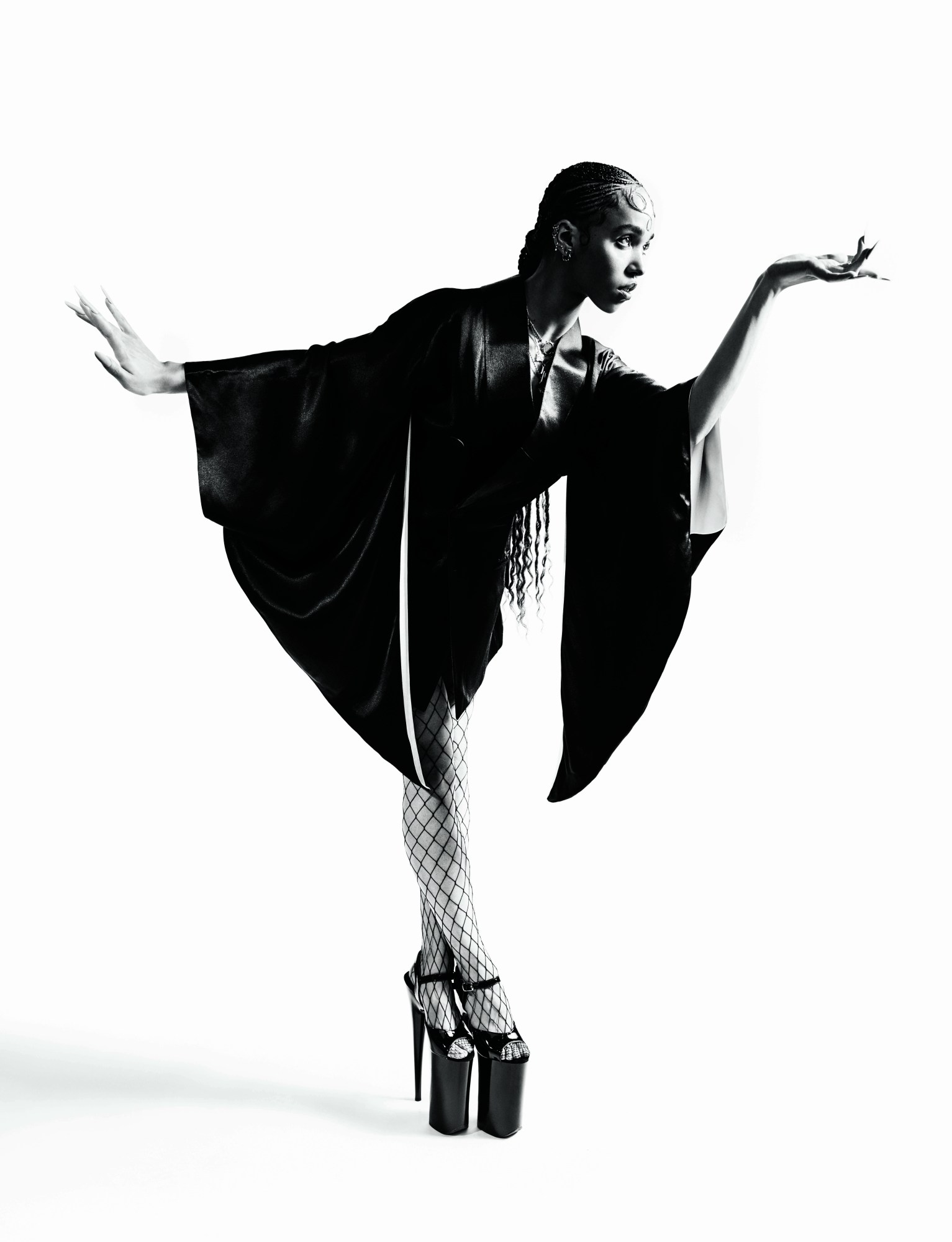
“I used to laugh to myself about how, as a woman, your story is often attached to the narrative of a man,” she explains. “No matter what you’re doing or how great your work is, sometimes it’s as though you have to be attached to a man to be validated. I’d felt like that at times. And then I started to read about Mary Magdalene and how amazing she was; how she was likely to have been Jesus’s best friend, his confidante. She was a herbalist and a healer, but, you know, her story is written out of the bible and she was ‘a prostitute’. I found a lot of power in the story of Mary Magdalene; a lot of dignity, a lot of grace, a lot of inspiration.”
Album opener “1000 Eyes” sets the tone for the record; a choral a capella bringing about the threat of change, the end of a relationship. ‘It’s gonna be cold with all those eyes,’ her distressed falsetto preempts over and over. A static bass builds up into a drone, while the vocal grows as disjointed as Twigs felt at the time of writing. “I thought,” she says, breaking down the song, “that if I was anything less than perfect I was going to be completely torn apart publicly.” This is heartbreaking, considering that despite spending the past seven years in the public eye, and navigating two high-profile relationships, it seems to observers that Twigs has managed to retain an impressive amount of privacy. Shunning interviews and avoiding press opportunities in lieu of walking her rescue dog Solo or practicing in a dance studio somewhere, mystique seems to surround the musician.
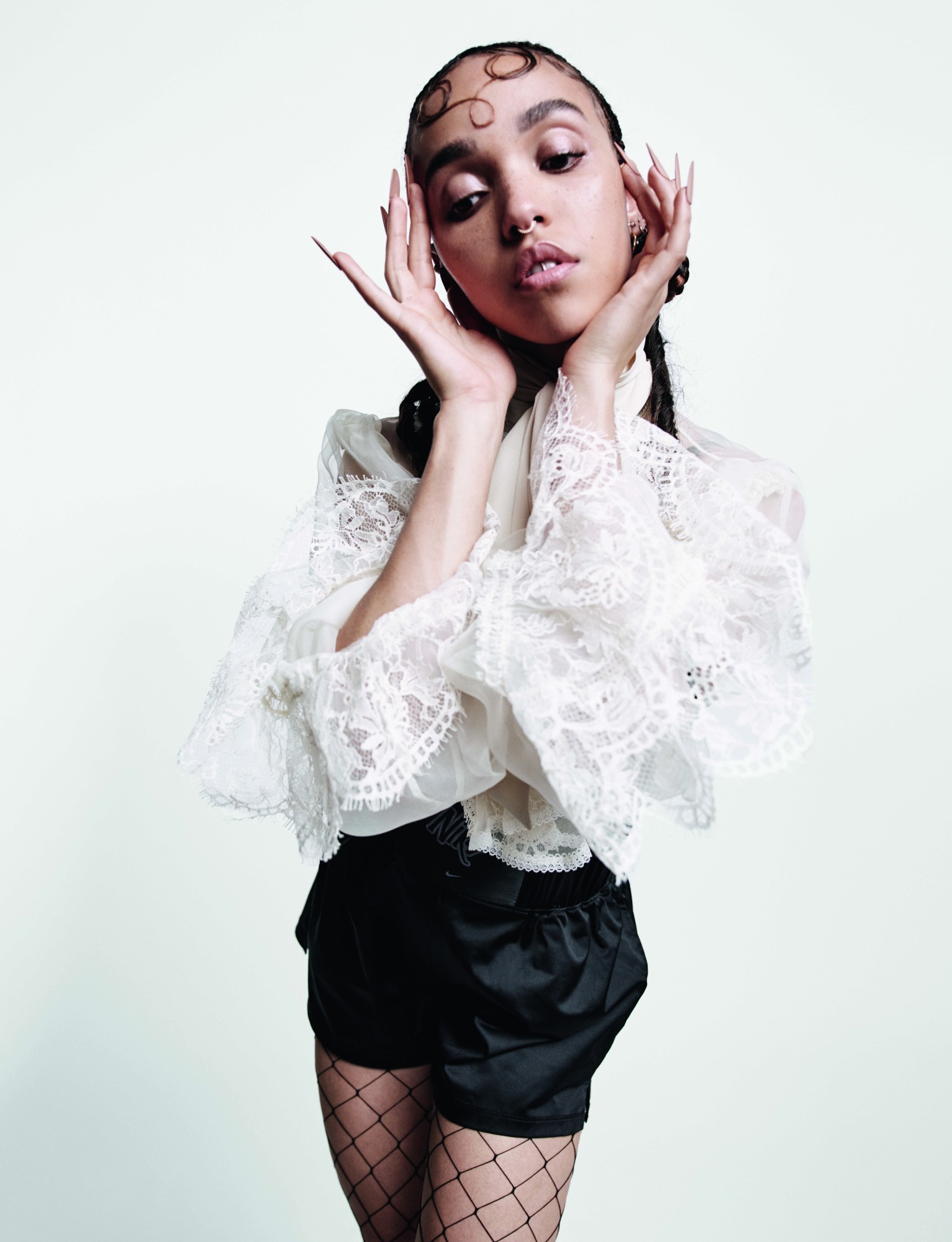
“Holy Terrain”, featuring Future, will undoubtedly receive the most attention. A dark, sexy, witchy trap tune, it’s a new direction for Twigs. After getting hold of Future’s number, she did what any of us would do and casually dropped him a text.
“I wasn’t sure whether he would even know who I am. I was like, ‘Hi, it’s Twigs. Let me know if you wanna talk about music or anything.’ He texted back right away and I was like…” Twigs throws her phone onto the sofa beside her suddenly. “‘Oh my god, he’s just messaged me back!’ He’s such a sweetheart. I sent him the album and I called him up and was like, ‘Listen, Future… this is what my album’s about. It’s a really empowering, sensitive record, with a lot of feminine energy, and this song is probably the most fun track on it, but I still need lyrical content.’ And he said, ‘Okay, I’ve got it’. And his verse is beautiful,” she says. “He’s just talking about his downfalls as a man; how he’s sorry and asking for healing. I love sad Future. I love when he gets emo, when he expresses himself. It’s just so beautiful when he opens up.”
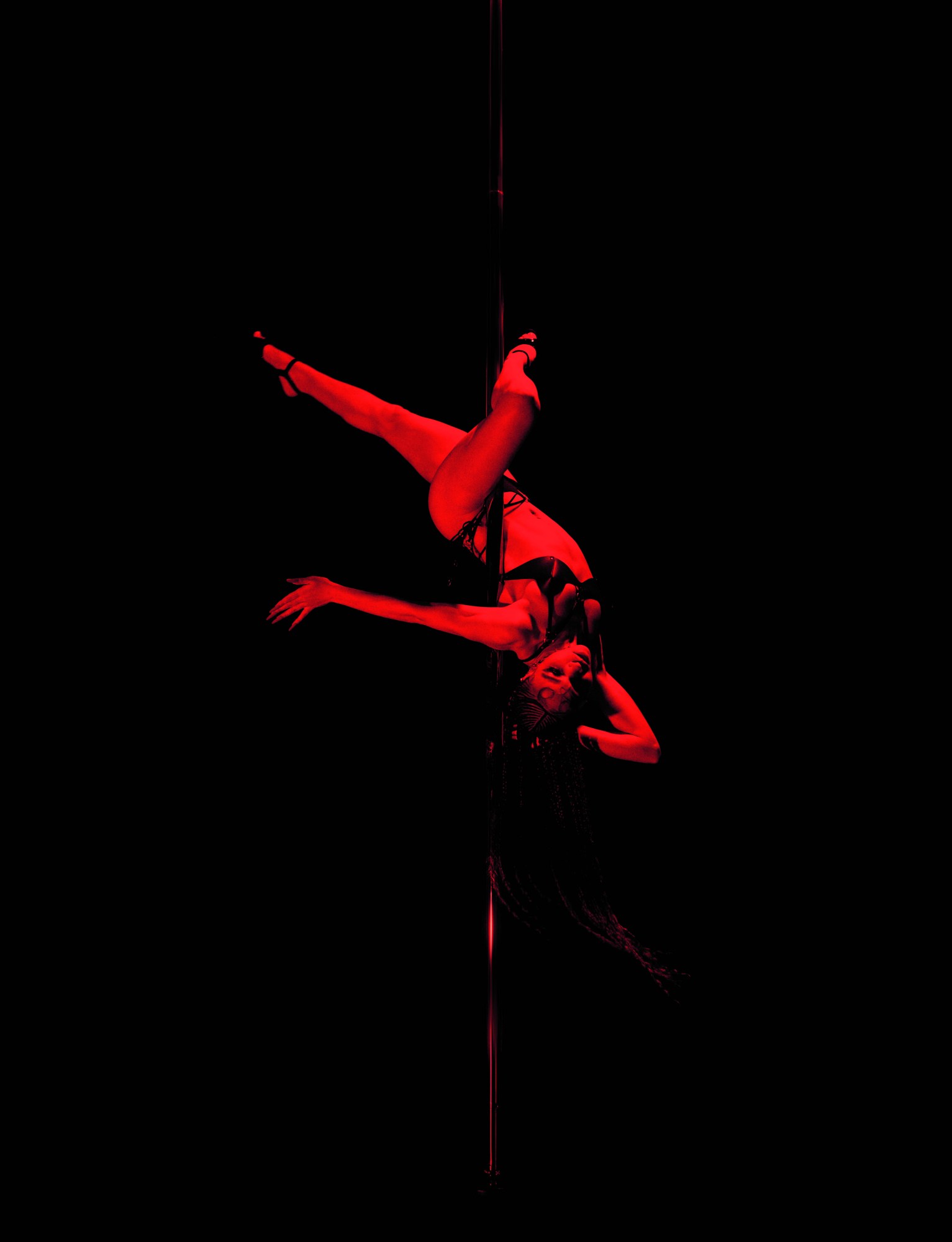
“Sad Day” is like if Opus III’s 1992 dance hit “It’s A Fine Day” ran into Kate Bush on a hillside. “I find it neurotic,” Twigs says of the vocal hook. “It’s all on the same note, it’s creepy. It’s asking, in the monotony of your life, would you take a chance on someone for something bigger? Would you take a risk on love and possibly being hurt again?” There are more glitchy Kate Bush vibes on ” Mary Magdalene”, which opens with a warped piano solo and moves onto reflections on female power.
One of her favourites to perform, “Home With You”, touches on demanding attention; “It’s about relationships. People are just quite needy, aren’t they?” she says. “It’s so fun and beautiful to sing. Those big strings at the end – it’s like flying with your voice!” ” Mirrored Heart” is a tear-soaked piano ballad, full of pain and conflict. “Oh, it’s so sad, isn’t it?” Twigs asks. “Usually I’m a mess when I sing it. I cry every time. It’s actually really nice crying on stage. I always know it’s coming.”
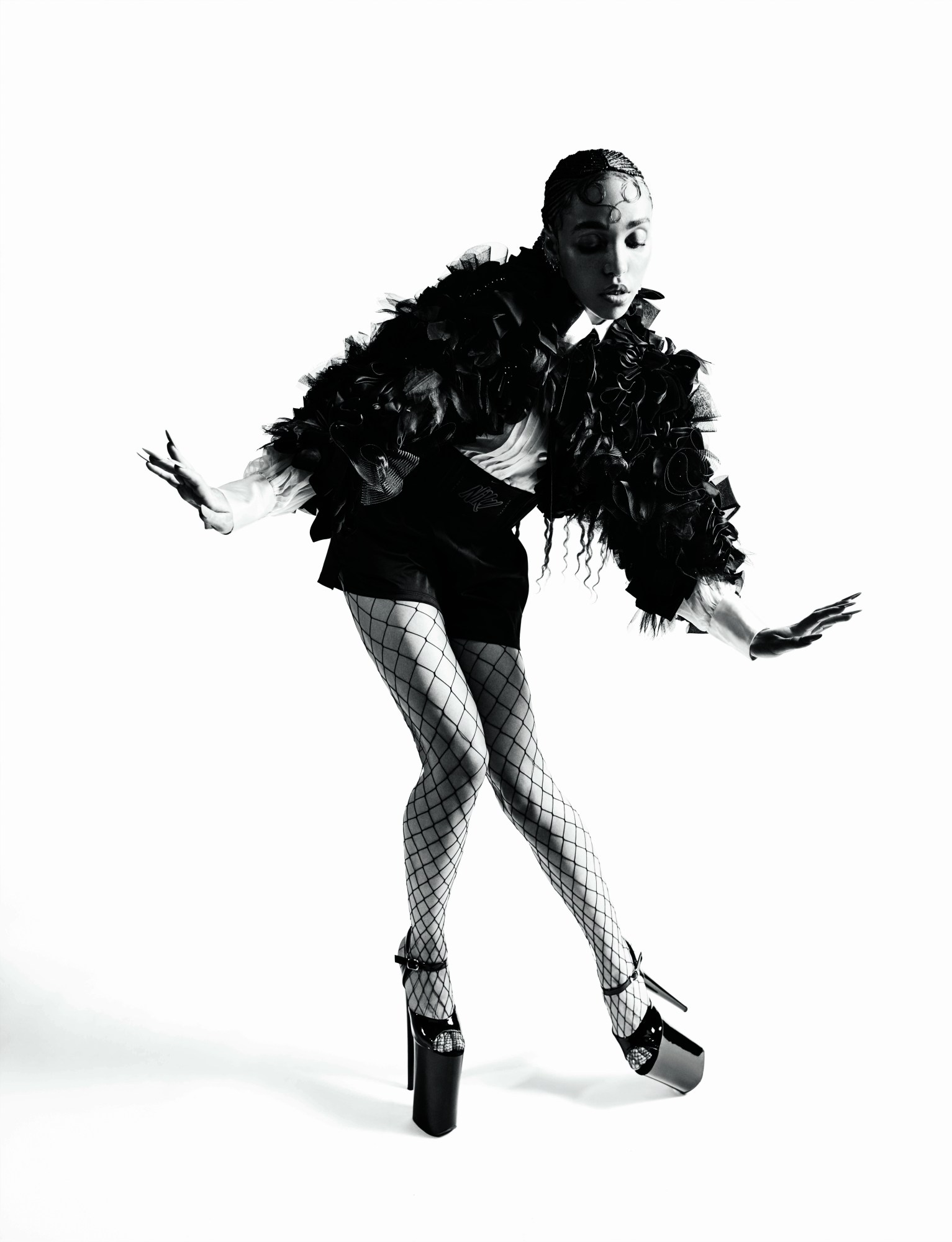
Then there’s “Daybed”, which feels reflective, accepting and calm. “When I wrote it,” Twigs says, “I knew that the whole of my life was about to fall apart. Everything that I knew, all my stability and everything I was attached to… everything was about to fucking go.” A pretty horrific moment, then? “But it’s not an angry song. It’s like, wow, this is life. It’s gonna happen. I’m gonna lose everything and have to build it back up again.” The lyric ‘possessive is my daybed’, she says, is about when you’re lying on your sofa lost in thought, and you just can’t move. “Have you ever had that?” she asks. “Everything in the room becomes really abstract. Like when you say a word over and over again and it starts to lose its meaning. Like that, but with your room or your house or just… everything. You just start to see things in a different order. Everything has a place and a harmony and all you can do is let it happen, let it wash over you.”
For someone who is usually very on top of things, very deliberate, it must be a huge deal to feel out of control like that? “Yes and no… I think there is a control in the acceptance that you’re not in control. As soon as you can accept that, all of a sudden you’re not struggling anymore and you feel at peace. You feel calm.” Her eventual recovery shines through here; the light at the end of the tunnel.
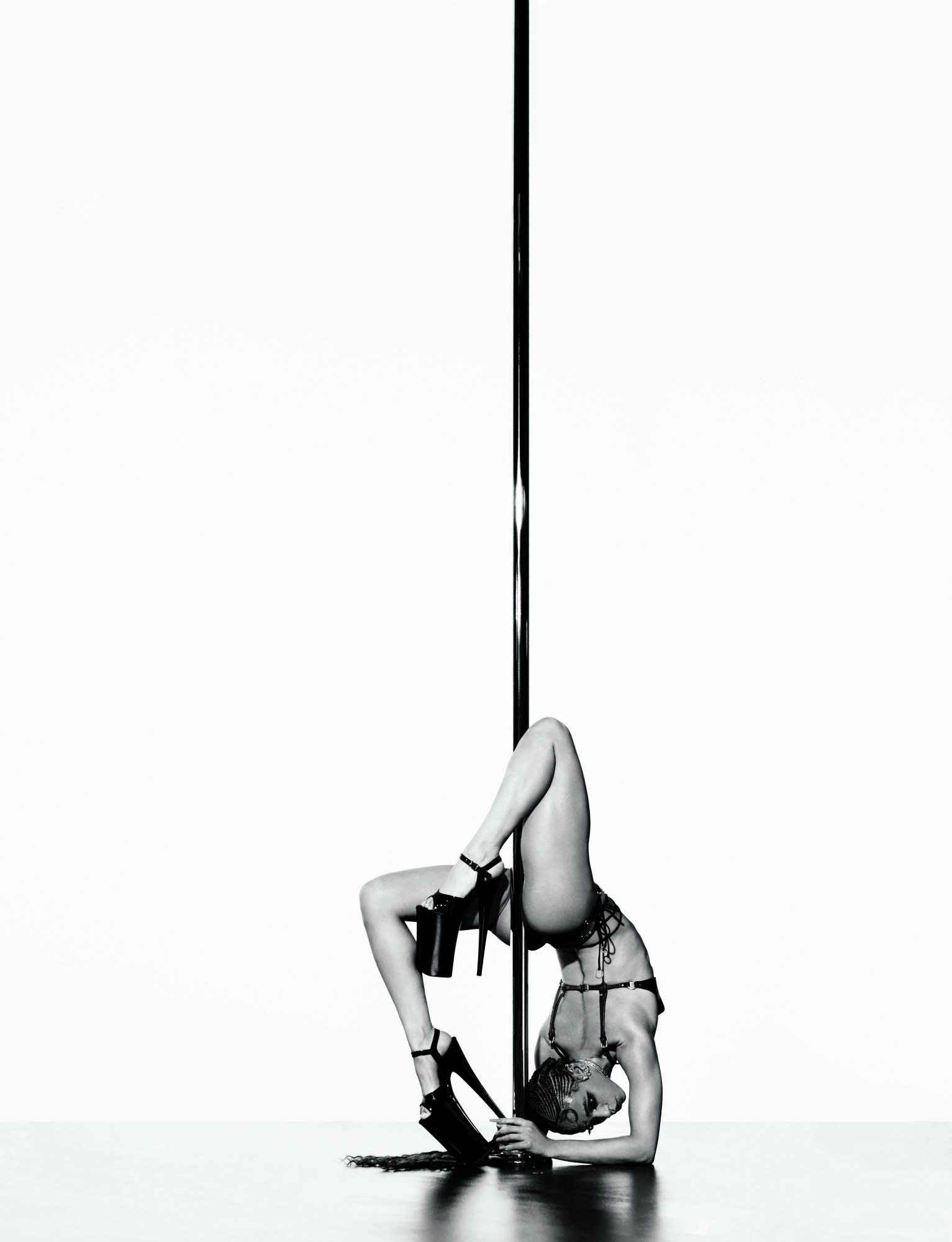
With the album on the verge of release, does she still feel some kind of affinity with its namesake? “Not in a ‘this is my alter-ego’ kind of way. It’s not a concept album,” she says with a laugh. “It’s not. She just helped me get somewhere. She helped me think differently. It’s done now. I can let it go.”
A couple of weeks ago, Twigs made a pilgrimage to Glastonbury, where the Saint Michael leyline meets the beautiful ruins of a religious building above the Mary Magdalene chapel. “I went and I meditated on it,” she says. “She didn’t inspire the whole album, but she inspired a train of thought which helped me finish it. We went up to the top of a hill during the eclipse and everyone was screaming at the moon. It was really amazing that I was able to say ‘thank you and goodnight’, you know?”
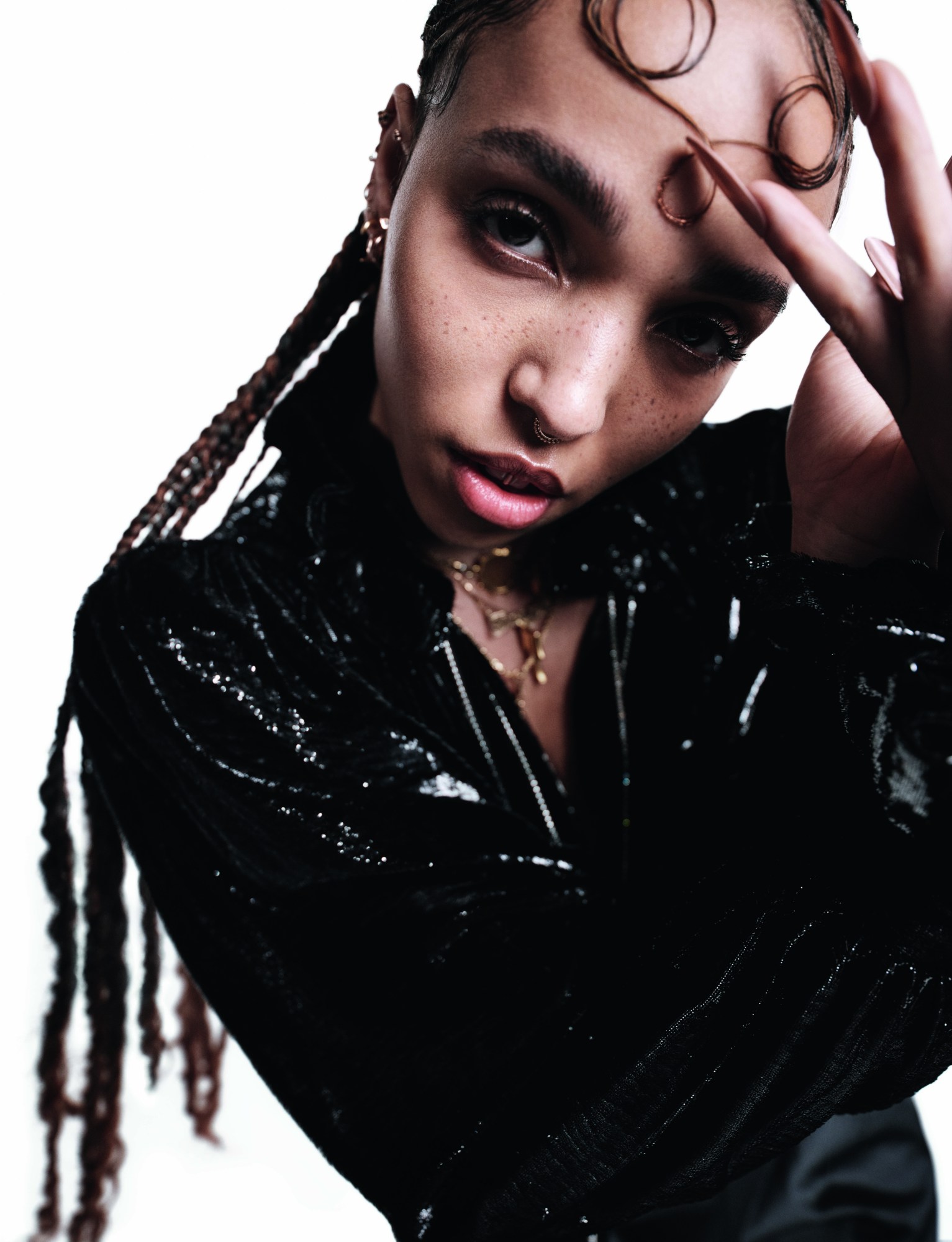
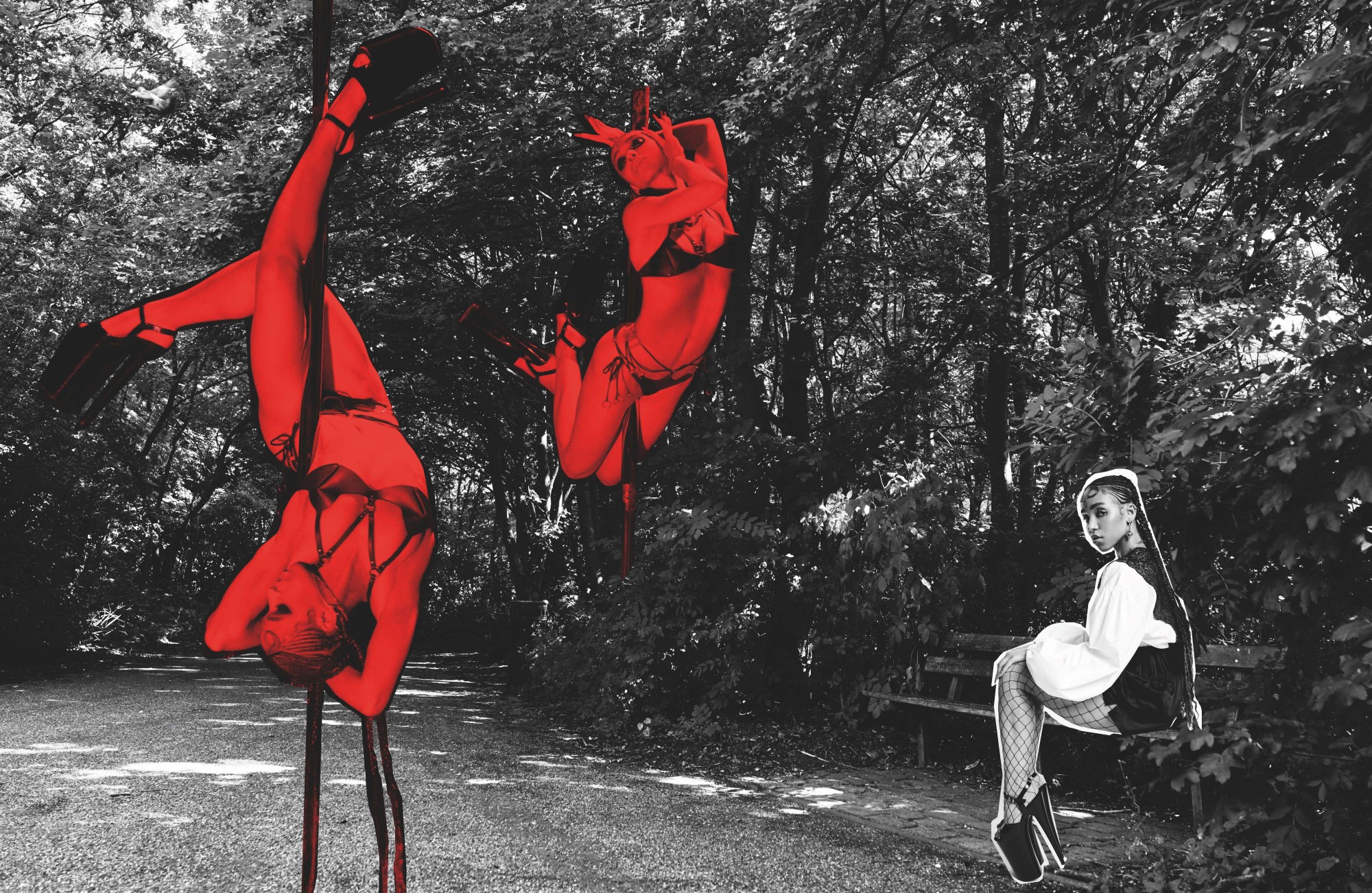
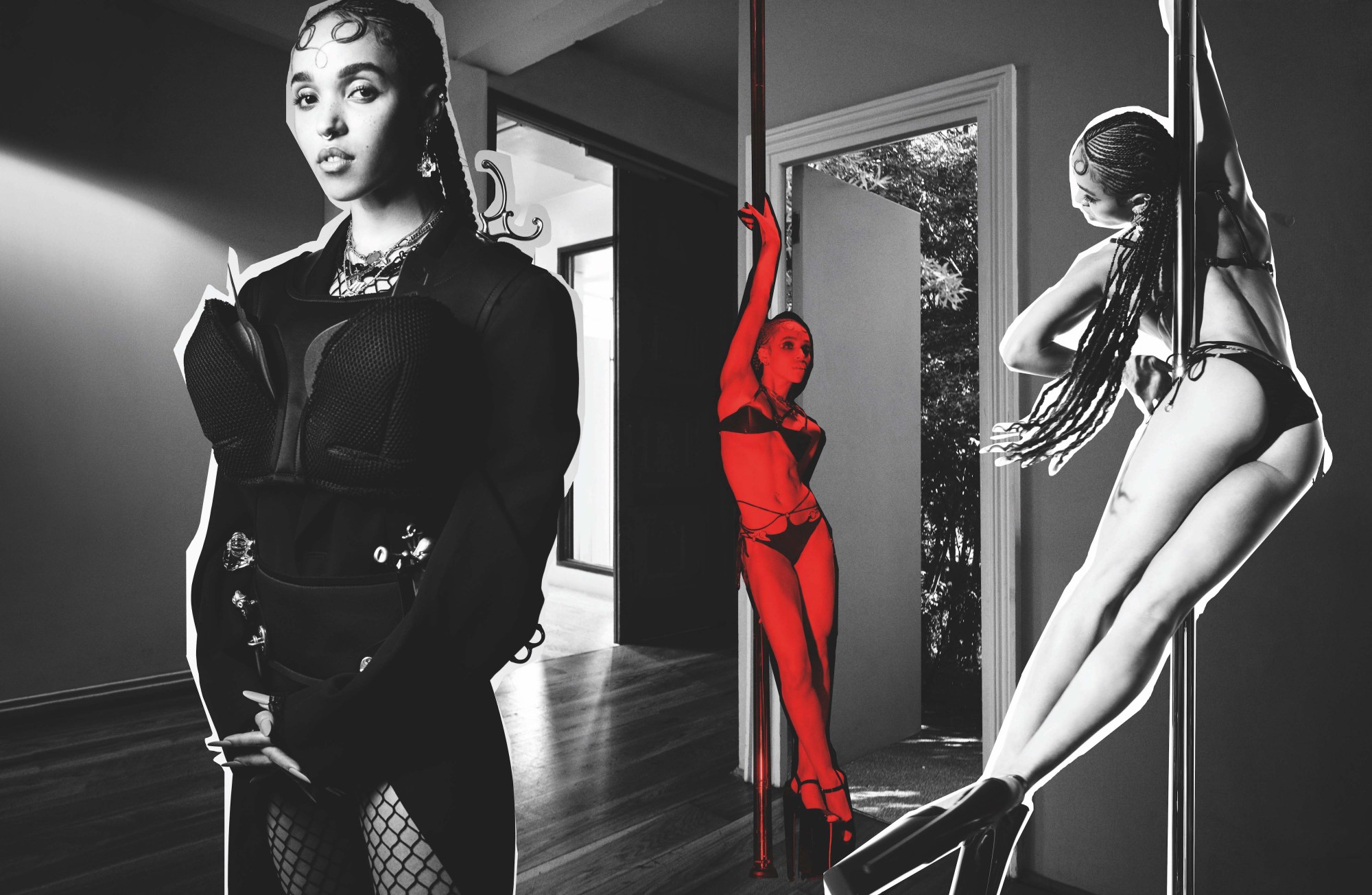
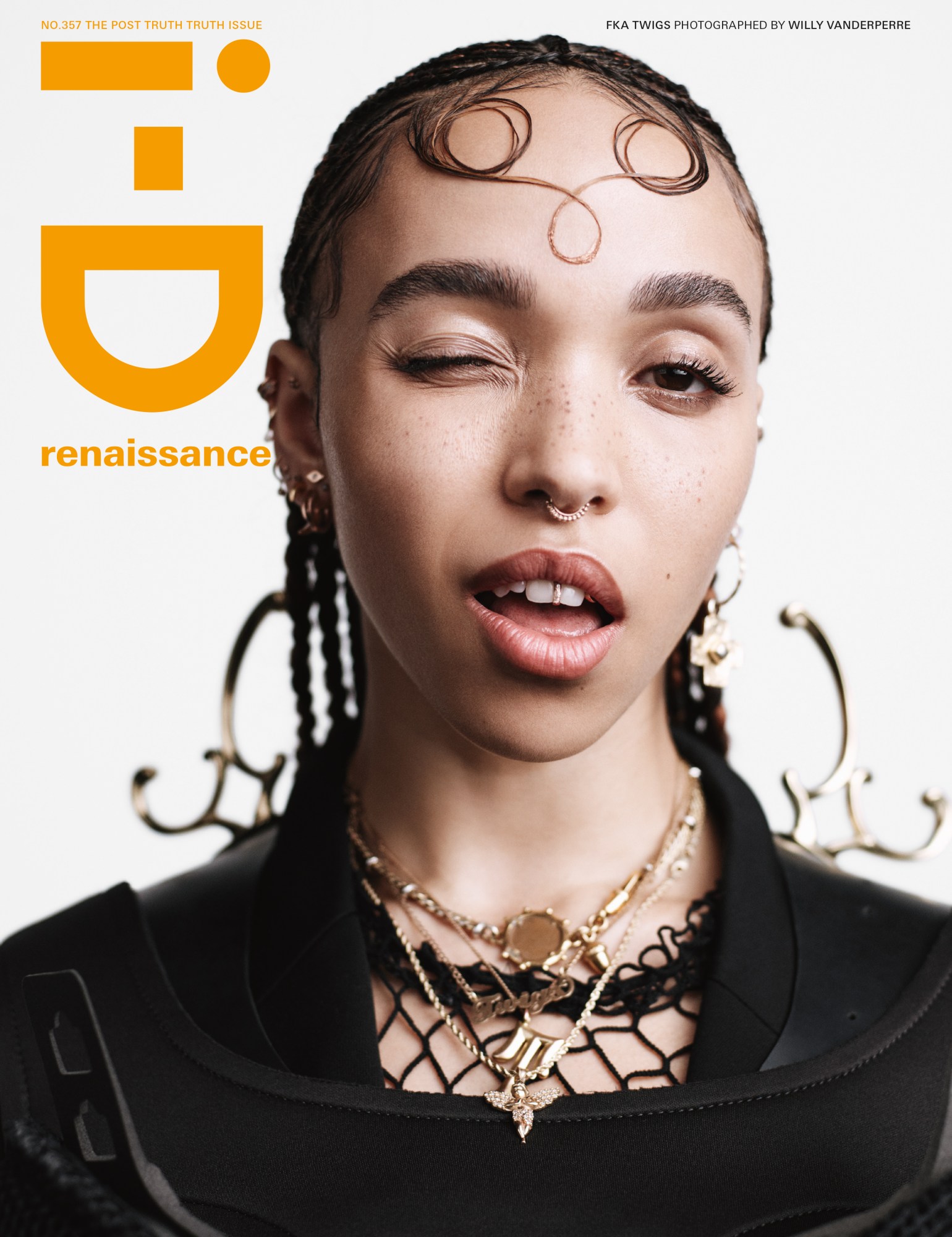
Credits
Photography Willy Vanderperre
Styling Alastair McKimm
Hair Rio Sreedharan at The Wall Group using Kérastase
Make-up Lynsey Alexander at Streeters using Lancôme
Nail technician Ama Quashie at Streeters using CHANEL Le Vernis Organdi and CHANEL La Crème Main
Set design Emma Roach at Streeters
Photography assistance Romain Dubus, George Eyres, Tomo Inenaga and Louis Headlam
Digital technician Henri Coutant
Styling assistance Madison Matusich and Abby Adler
Hair assistance Sherean Miller
Make-up assistance Phoebe Brown
Set design assistance Nia Samuel Johnson
Production Ragi Dholakia Productions
Production assistance Claire Huish, May Powell, Nina Parsons and Louis Courts
Casting director Samuel Ellis Scheinman for DMCASTING.

